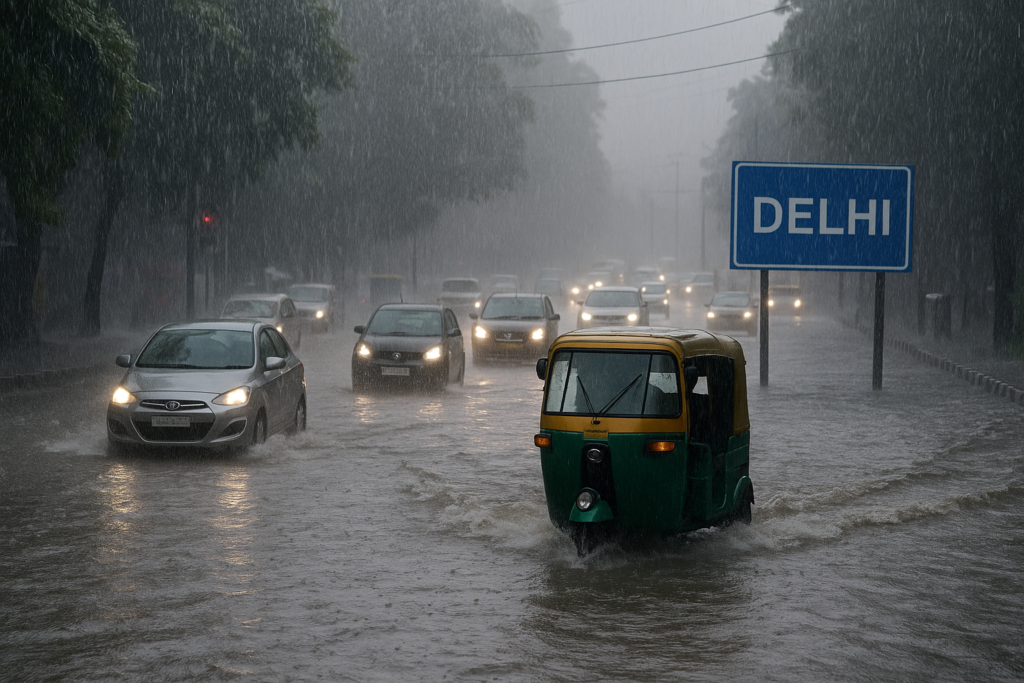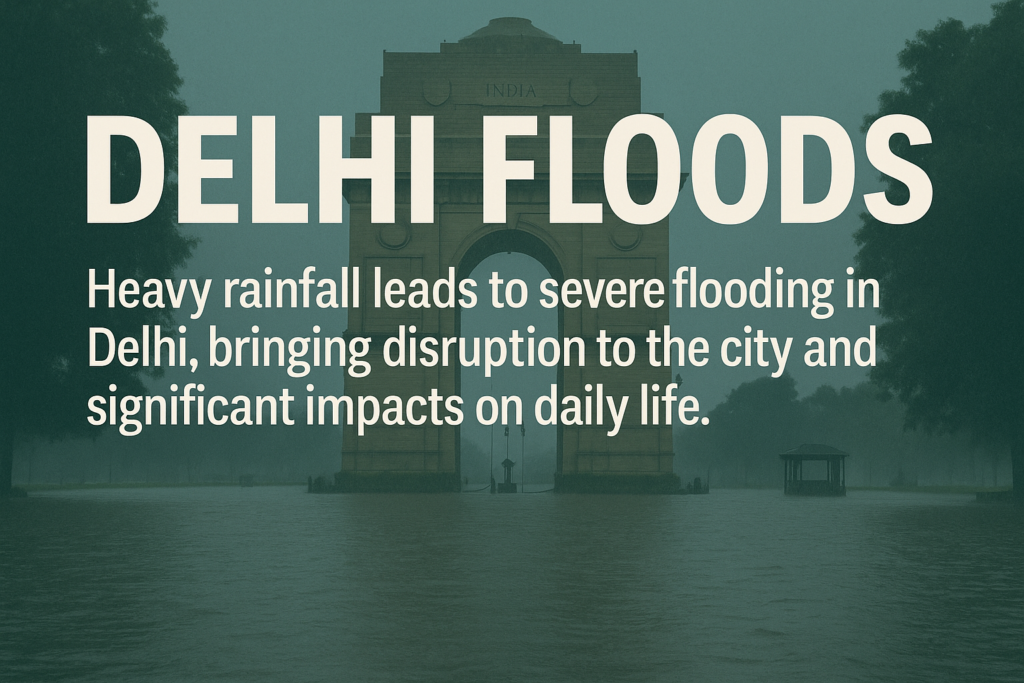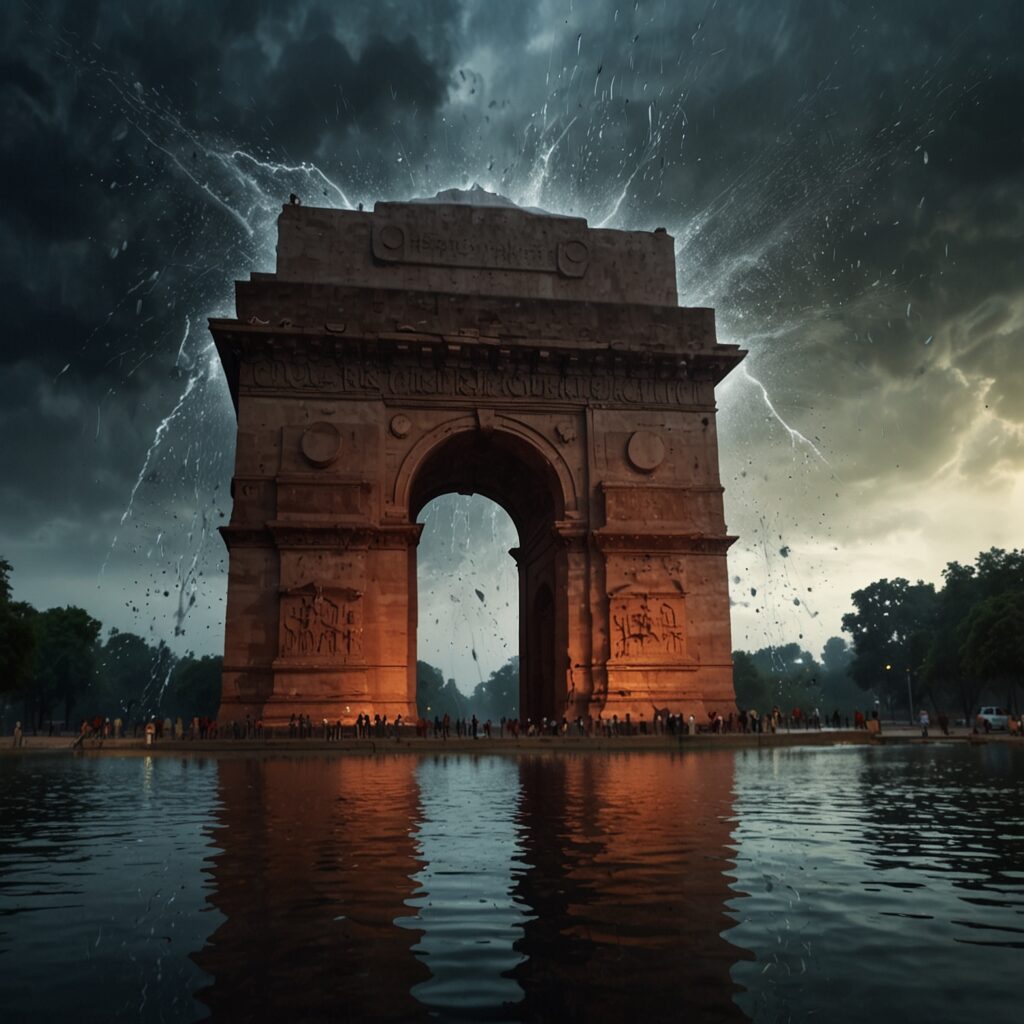Heavy rains, thunder, and hailstorm lashed Delhi-NCR overnight. Experts suggest the rare weather could be linked to Kal Baisakhi-like pre-monsoon activity.
Read More : https://theunfilteredmanch.com/param-sundari-first-look-janhvi-sidharths-new-pairing/

Flooded Streets Bring Delhi to a Standstill
Delhi and surrounding areas woke up to a drenched city on Monday morning. Overnight rain lashed the region, accompanied by strong winds and thunderclaps. Streets were flooded, traffic signals went out, and fallen trees blocked major roads. Commuters struggled to navigate waterlogged routes, while power outages added to the chaos.
This wasn’t just a random downpour. According to weather experts, the event was triggered by a complex pre-monsoon system that rapidly intensified over northwestern India.

A ‘Kal Baisakhi’-Like Storm in Delhi?
Kal Baisakhi, or Nor’wester, is a term used for sudden and violent thunderstorms that occur in eastern India — especially in West Bengal, Assam, Odisha, Bihar, and Jharkhand — during April and May. These storms bring fierce winds, intense rainfall, and sometimes hail or tornadoes.However, Delhi usually doesn’t see such weather. But due to climate change, seasonal boundaries are blurring. Weather patterns that were once regional are now expanding. Experts believe Sunday’s storm may share characteristics with Kal Baisakhi — making it an unusual but not impossible phenomenon for the capital.
Why Did This Happen in Delhi? Key Weather Factors Behind the Storm1. Western Disturbance:
An active western disturbance moved across north India, bringing moisture from the Mediterranean region. This clashed with local heat, creating unstable weather conditions.
2. Cyclonic Circulation:
A cyclonic system formed over Punjab and Haryana, pulling in moisture from the Arabian Sea and Bay of Bengal. This added fuel to the storm clouds building over Delhi-NCR.
3. Convective Activity:
Intense daytime heat combined with high humidity triggered vertical cloud development. These convective clouds often result in thunderstorms with heavy rainfall.
4. Influence of Monsoon Trough:
The monsoon trough — a low-pressure belt — has started shifting northward as May ends. Its impact brought additional moisture, increasing the chance of pre-monsoon storms.
When these four elements merged, Delhi saw a weather event more typical of eastern India — sudden, severe, and disruptive.
While Delhi isn’t a typical hotspot for Kal Baisakhi, shifting climate dynamics may be changing that. The recent storm serves as a warning that extreme weather events could become more frequent — and more unpredictable — in urban centers across India.













More Stories
Air India Crash: Survivor Ramesh Kumar Calls it Miracle
Govt Sets New AC Rules: Temp Must Stay Between 20°C and 28°C in Homes, Offices, and Cars to Save Energy
New 8km Tunnel to Connect Delhi-Meerut Expressway with Gyarah Murti — Travel Time to Airport from East Delhi to Drop Sharply